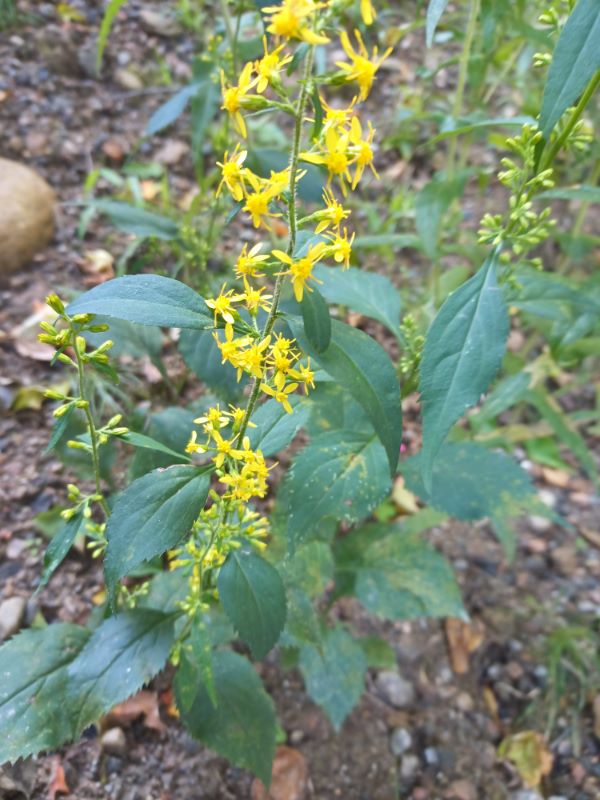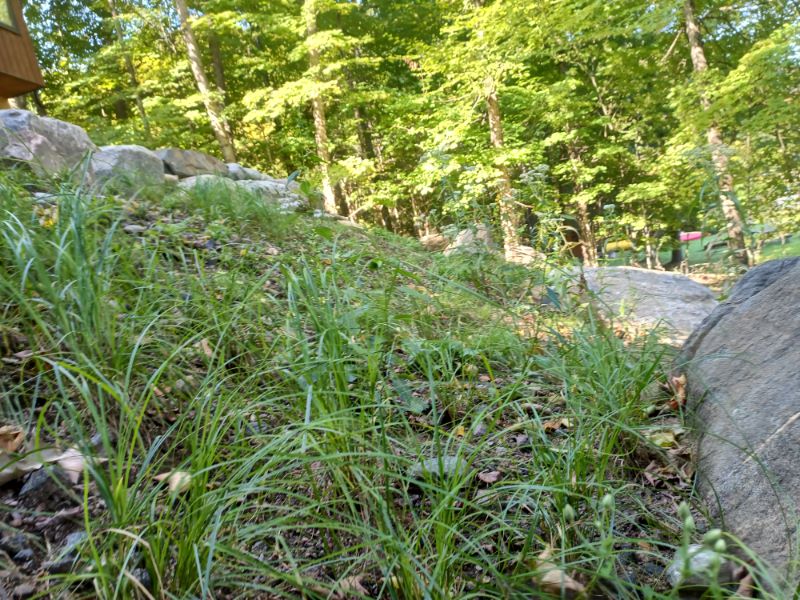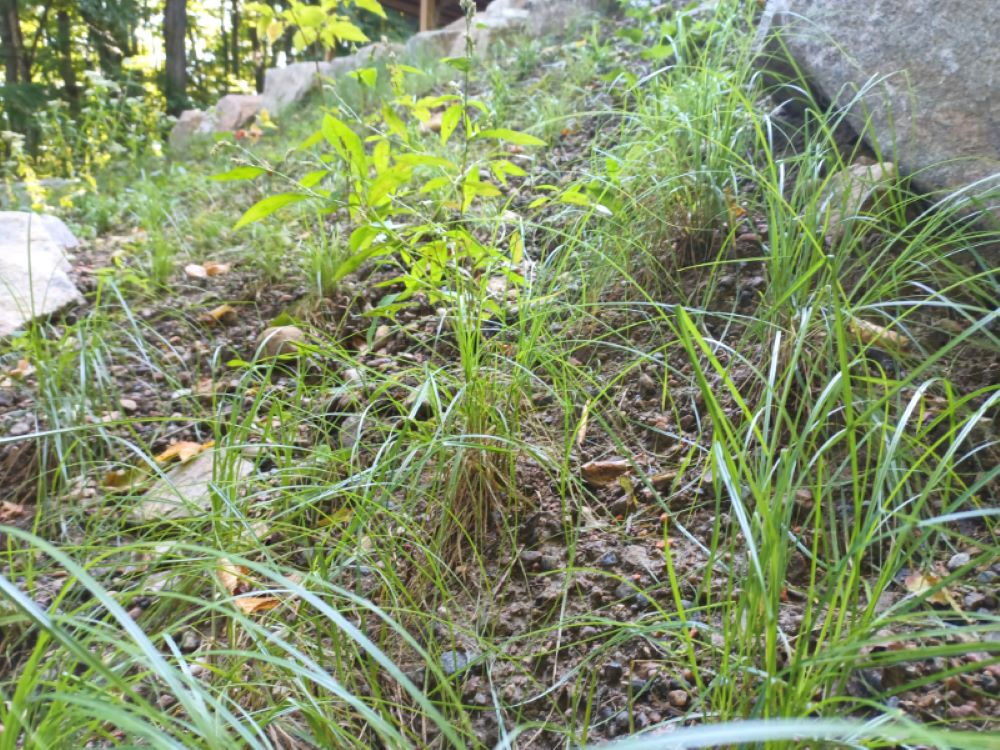Sedge Meadow: Native Plants for Shade at the Cottage
Many cottage landscapes are in shade or part-shade. And many are on slopes. Here’s a solution using native plants for that kind of site.
In the fall, the client had installed a deck on their cottage, facing the lake. This resulted in new landscaping that they wanted filled with native plants.
The site was north facing and shaded, with medium-moist soil. I visited it several times, including once where I stayed for over an hour during the middle of the day to monitor how the sun fell on it. A clearing in the trees allowed sun to penetrate for about two to three hours per day in midsummer. This qualifies it as a shade garden.
I suggested we create a sedge meadow, with a groundcover of three different sedges and then seasonal interest from herbaceous plants and shrubs in the vignette and structure layers.
Groundcover layer
Sedges (Carex species) have many benefits, one of the main of which is their ability to thrive on shaded or part-shaded sites. This is why we have so many native sedges here in Haliburton County. Another benefit of sedges is that they do most of their growing in the spring and fall, when the soil is cooler. This results in the landscape greening up earlier than, say, a prairie-style garden would.
It would be wrong to say sedges don’t have flowers and seeds. They do! A benefit is that they produce their flowers and seeds in the summer, adding interesting during that season.
In addition to the sedges, we also included two species of violets in the groundcover layer. Violets will add some more traditional flowers to the landscape and will happily self-seed all over.

Vignette layer
Woodland plants generally flower in the spring and fall, when leaf cover is reduced. We tried to find plants that tolerate shade and flower at various times of the year, including the summer, for visual interest. Most of the perennials here were planted in groups of four or six.

Structure layer
One of the main aims of the structure layer is to situate the landscape, to frame it. As well as the cottage, the garden had several large trees that framed the lake, as well as steps that came down one side of it.
For that reason, we added just two shrubs to the landscape, to either soften the transition from forest to clearing or to provide an extra bit of visual interest. As shrubs can go quite large, I didn’t want to add too many and reduce the view of the lake.

The design
The vast majority of the plants were the groundcover sedges. These were planted in a tapestry, alternating between the three species. The idea is to create visual interest rather than a flat monoculture of one species.
The herbaceous perennials were planted in groups of a handful of species, scattered throughout the site.
One of the shrubs was planted near the forest edge to soften the transition. The other was planted a sculptural feature in years to come.
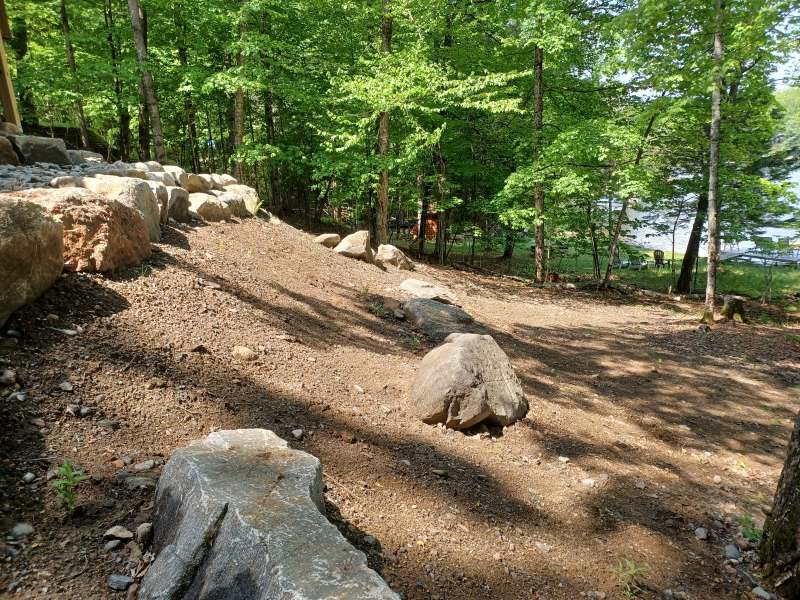
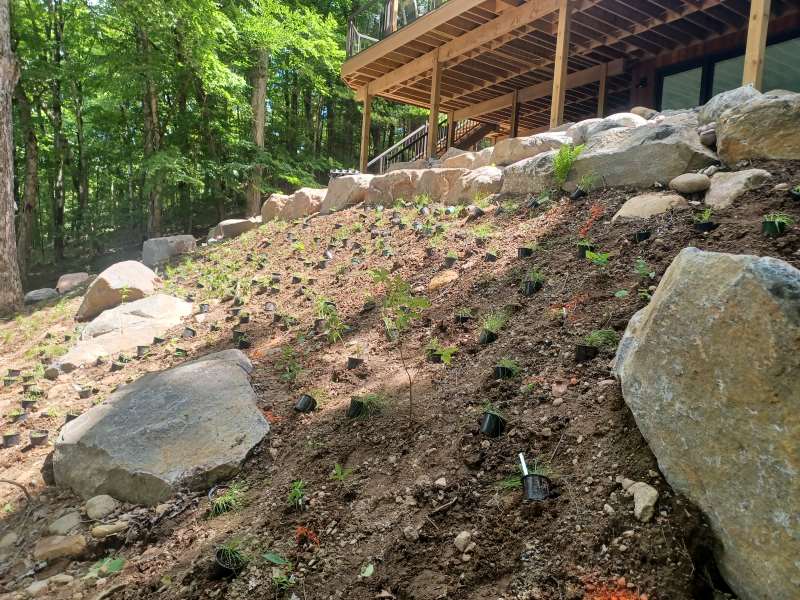
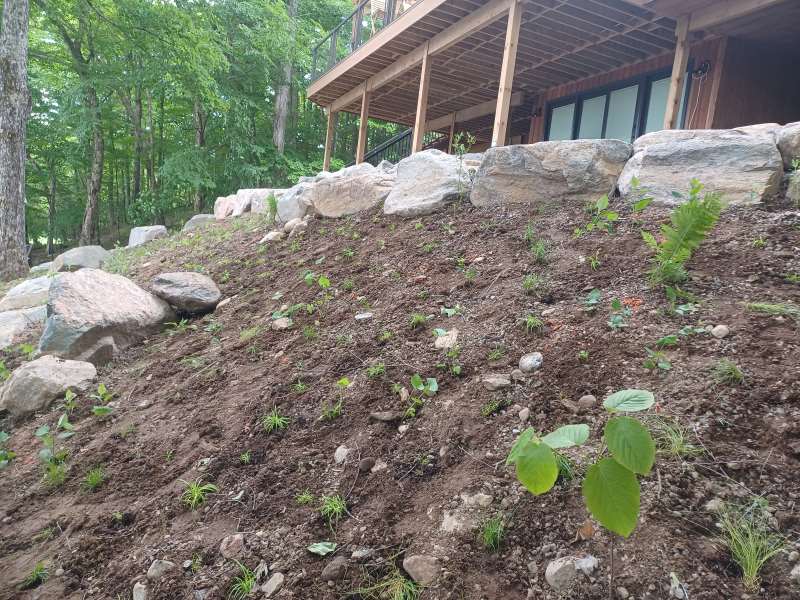
Update September 2024
Here are some pictures when I went back to visit in the fall.

